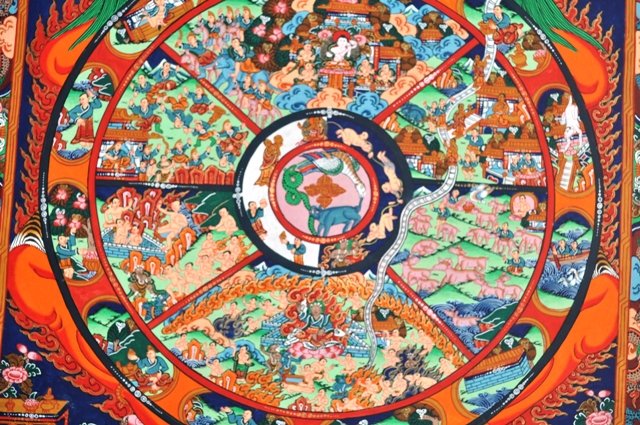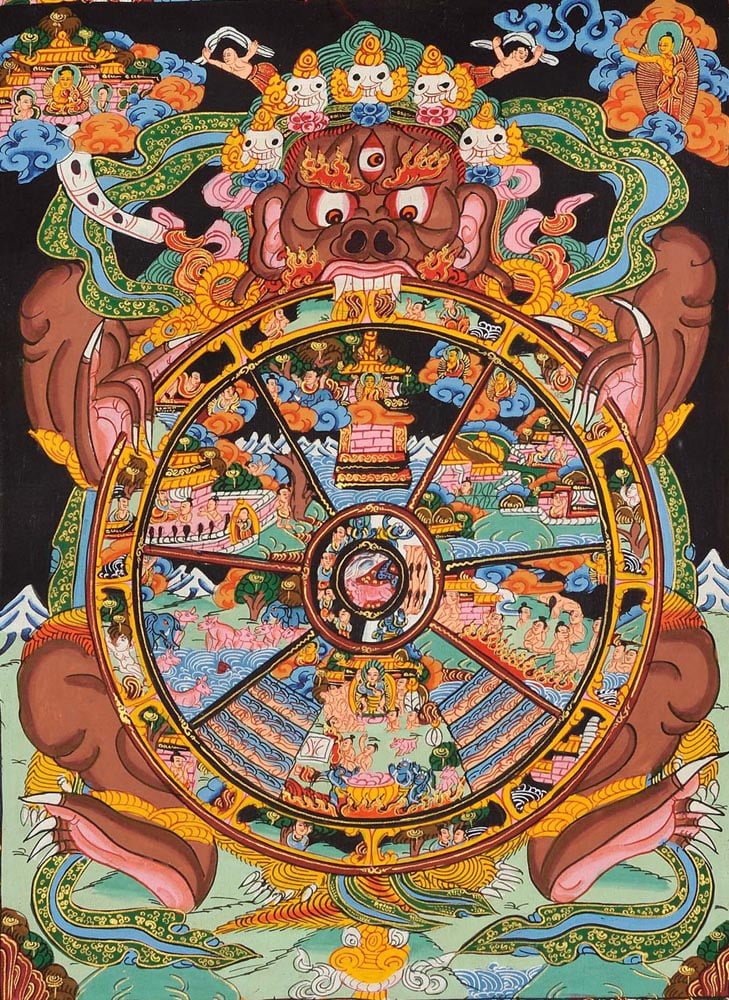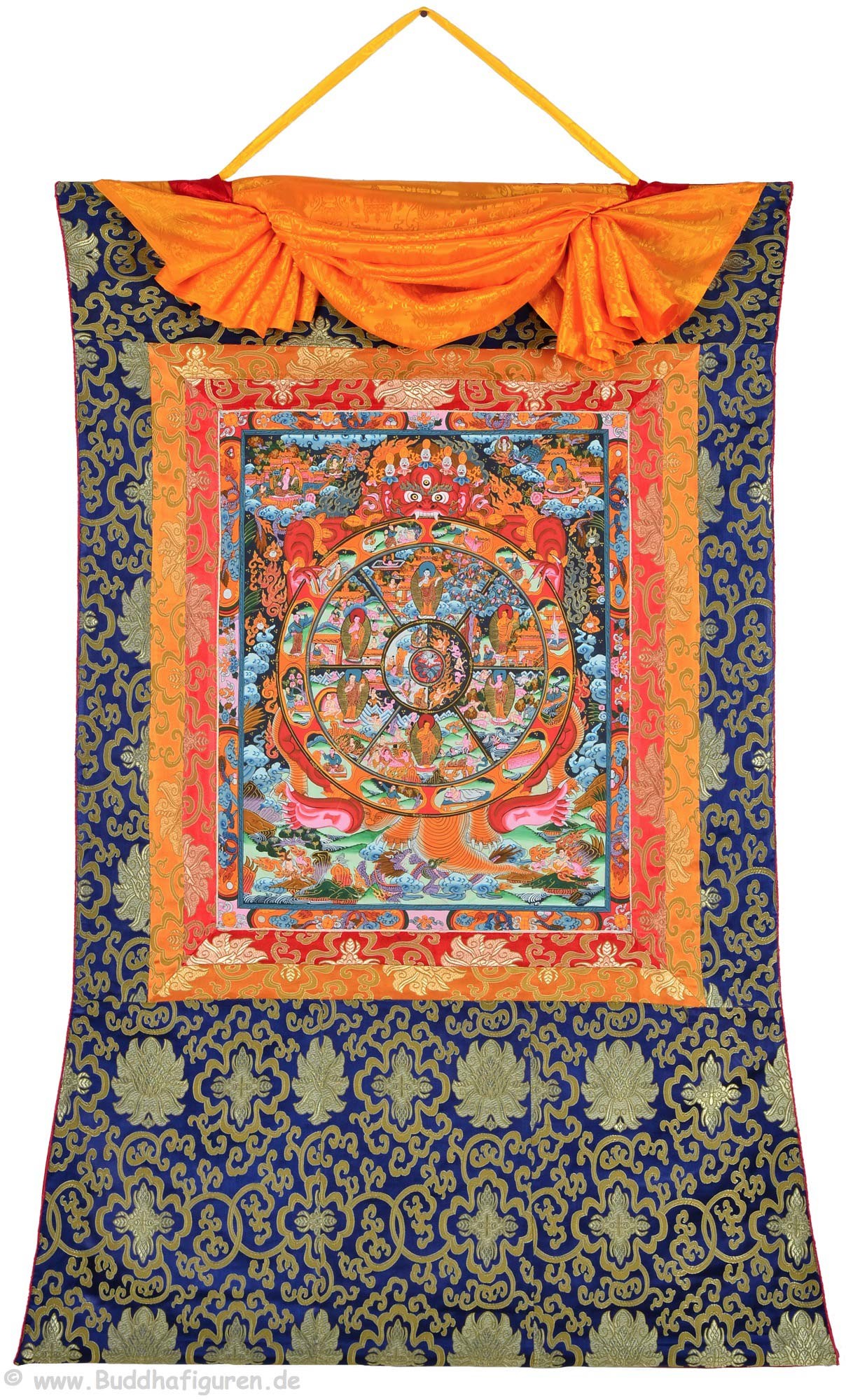

In fact, some Buddhist scholars believe that the painting existed prior to Buddha’s statues. The Buddha on the left is pointing to the moon, indicating that liberation that causes one to cross the ocean of suffering of cyclic existence should be actualized." ĭzongsar Khyentse Rinpoche described the Wheel of Existence as "a popular painting that you can see in front of almost every Buddhist monastery. This beautiful Wheel of Life is a perfect interpretation of the concepts behind Samsara.

For over 25 years, hes been practicing the ancient art form of Tibetan Buddhist thangka painting. The fierce being holding the wheel symbolizes impermanence. Tashi Gurung is a Thangka and Mandala artist from Nepal. The outer rim symbolizing the twelve links of dependent arising indicates how the sources of suffering - actions and afflictive emotions - produce lives within cyclic existence. "Symbolically three circles, moving from the centre outward, show that the three afflictive emotions of desire, hatred, and ignorance give rise to virtuous and non-virtuous actions, which in turn give rise to levels of suffering in cyclic existence. His Holiness The Dalai Lama about the Wheel of Existence: See interactive thangka with explanations in English and Tibetan. This depiction is a traditional description of the model of Buddhist cosmology, the environment and inhabitants within it. The Wheel of Life sometimes also called Wheel of Existence, or Wheel of Cyclic Existence. The Bhavachakra, the Wheel of Life or Wheel of Becoming, is a thangka which is a complex picture representing the Buddhist view of the universe.

Auspicious symbols appear between the figures. 116 small repetitions of White Tara surround the large representation in this painting. Like Ushnishavijaya, the deity on the Gold Thangka nearby, White Tara is a deity of long life. Skanskrit: bhavacakra) is a traditional Buddhist representation of the samsaric cycle of existence. White Tara, 19th century, U (Central Tibet), Tradition: Possibly Gelug, Pigments on cloth, Inv.

They are important teaching tools which portray the life of Gautam Buddha with many other small figures and deities. bhavacakra Tibetan: སྲིད་པའི་འཁོར་ལོ་, sipé khorlo. The Thangkas serve in many different ways. Artworks like these of any era or style can make for thoughtful decor in any space, but a selection from our variety of those made in mixed media, canvas and dye transfer print can add an especially memorable touch.The Wheel of Life (Skt. Use them in commercial designs under lifetime, perpetual & worldwide.
Thangka wheel of life download#
Finding an appealing wheel of life - no matter the origin - is easy, but Audrey Flack each produced popular versions that are worth a look. Download Thangka Wheel Life stock photos. If you’re looking to add a wheel of life to create new energy in an otherwise neutral space in your home, you can find a work on 1stDibs that features elements of black, brown, gray and more. This 100 handmade Thangka can be decorated as an elegant and. The Wheel of Life illustrates the essence of the Four Truths of the Buddhism: the existence of earthly suffering, its origin and cause, the practice path to liberation from suffering and its ending. Making the right choice when shopping for a wheel of life may mean carefully reviewing examples of this item dating from different eras - you can find an early iteration of this piece from the 20th Century and a newer version made as recently as the 21st Century. Thangka painting depicting Wheel Of Life is perfect for various home and office decor ideas. You can easily find an example made in the Modern style, while we also have 1 Modern versions to choose from as well. Surely you’ll find the exact wheel of life you’re seeking on 1stDibs - we’ve got a vast assortment for sale.


 0 kommentar(er)
0 kommentar(er)
